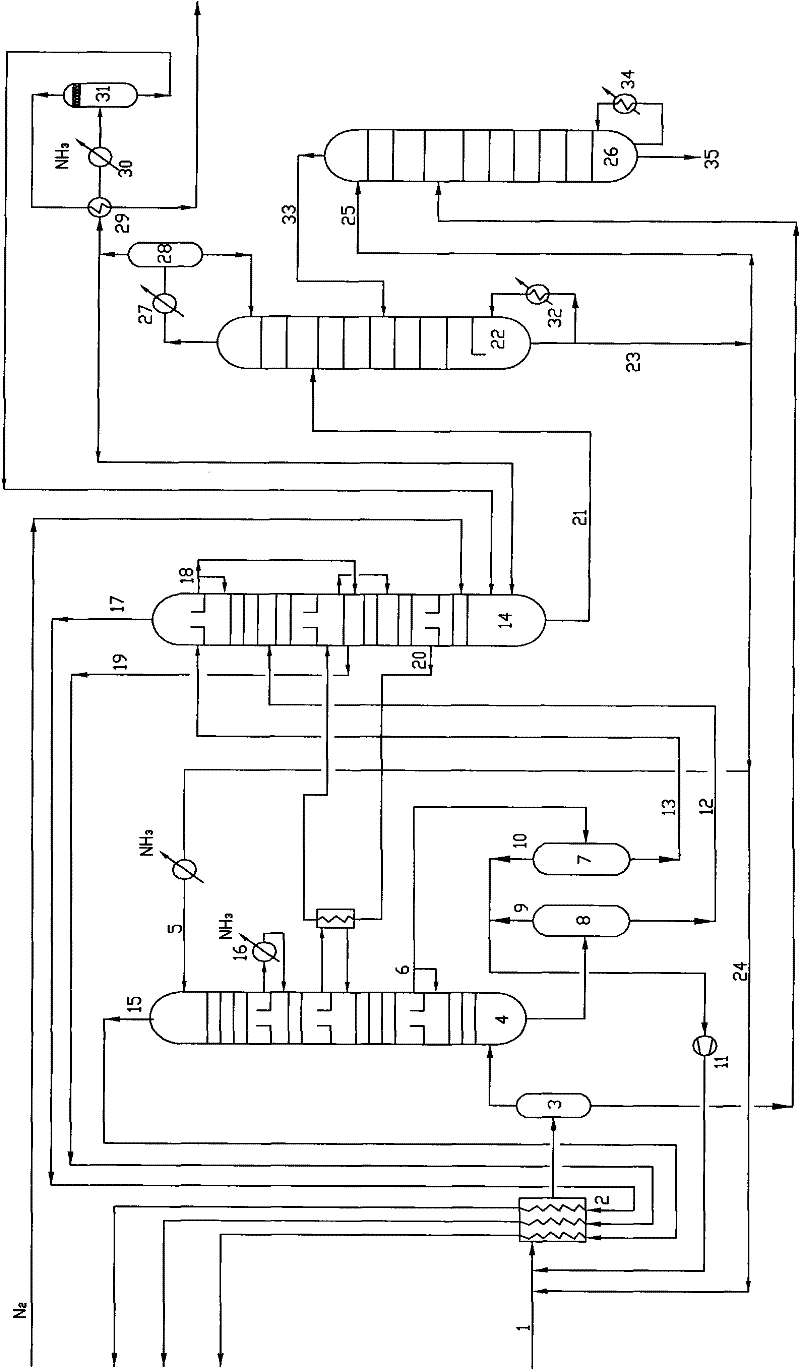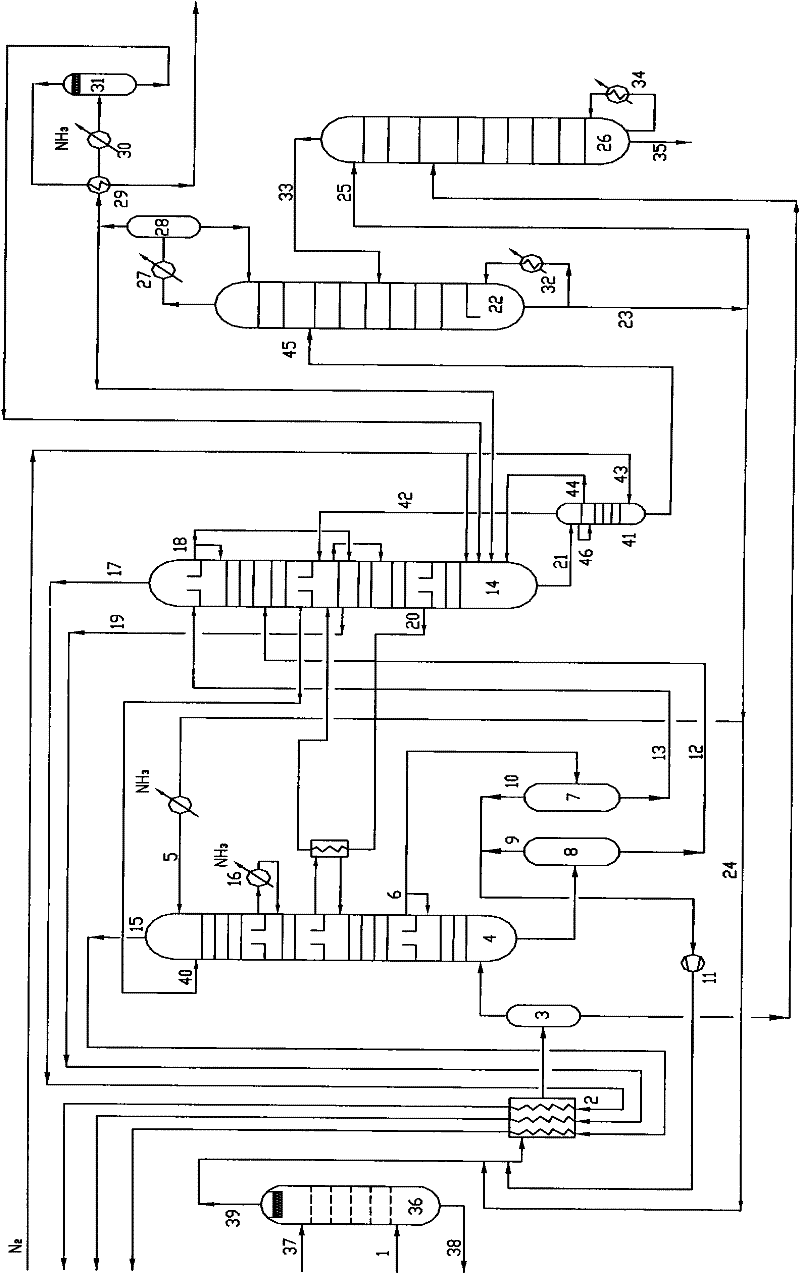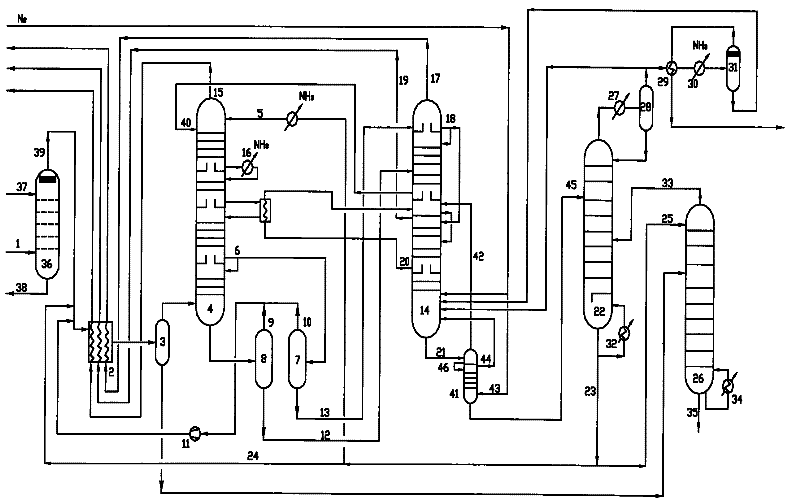Process for removing acid gas with low-temperature methanol solution
A technology of acidic gas and low-temperature methanol, applied in separation methods, chemical instruments and methods, air quality improvement, etc., can solve problems such as unqualified total sulfur content of purified gas, pollution of downstream equipment, blockage of pipeline valves, etc., to reduce external supply Effects of cooling capacity and power consumption, reduction of investment and consumption, and reduction of operating load
- Summary
- Abstract
- Description
- Claims
- Application Information
AI Technical Summary
Problems solved by technology
Method used
Image
Examples
Embodiment
[0021] Taking the raw material gas of coal gas as an example, if the attached figure 2 , the processing capacity is 106310Nm 3 / h Raw material gas (1) is in countercurrent contact with boiler feed water (37) in the ammonia washing tower (36), and after ammonia washing, the tower top gas (39) enters the raw material gas cooler (2), and the waste water at the bottom of the tower (38) is removed for sewage treatment . Before the feed gas enters the feed gas cooler (2), a small amount of lean methanol (24) is sprayed into it. After heat exchange and cooling, the water-containing methanol separated by the feed-liquid separator (3) enters the bottom of the absorption tower (4) and contains water. Methanol goes to the methanol / water separation tower (26). The lean methanol (5) from the heat regeneration tower (22) and the methanol semi-poor liquid (40) from the desorption tower (14) are sent successively from the top of the absorption tower (4), and are contacted and washed with t...
PUM
 Login to View More
Login to View More Abstract
Description
Claims
Application Information
 Login to View More
Login to View More - R&D
- Intellectual Property
- Life Sciences
- Materials
- Tech Scout
- Unparalleled Data Quality
- Higher Quality Content
- 60% Fewer Hallucinations
Browse by: Latest US Patents, China's latest patents, Technical Efficacy Thesaurus, Application Domain, Technology Topic, Popular Technical Reports.
© 2025 PatSnap. All rights reserved.Legal|Privacy policy|Modern Slavery Act Transparency Statement|Sitemap|About US| Contact US: help@patsnap.com



